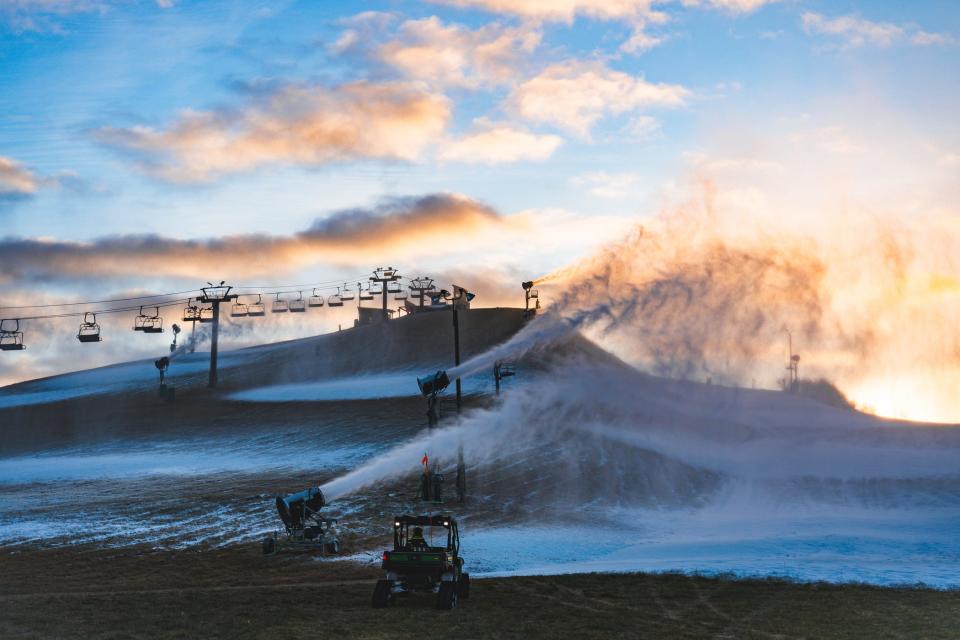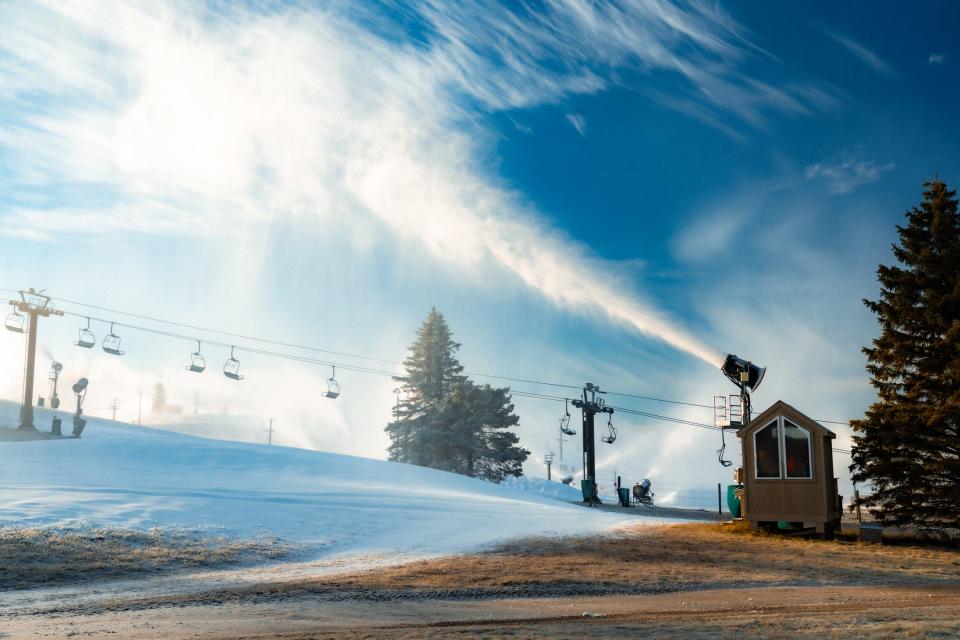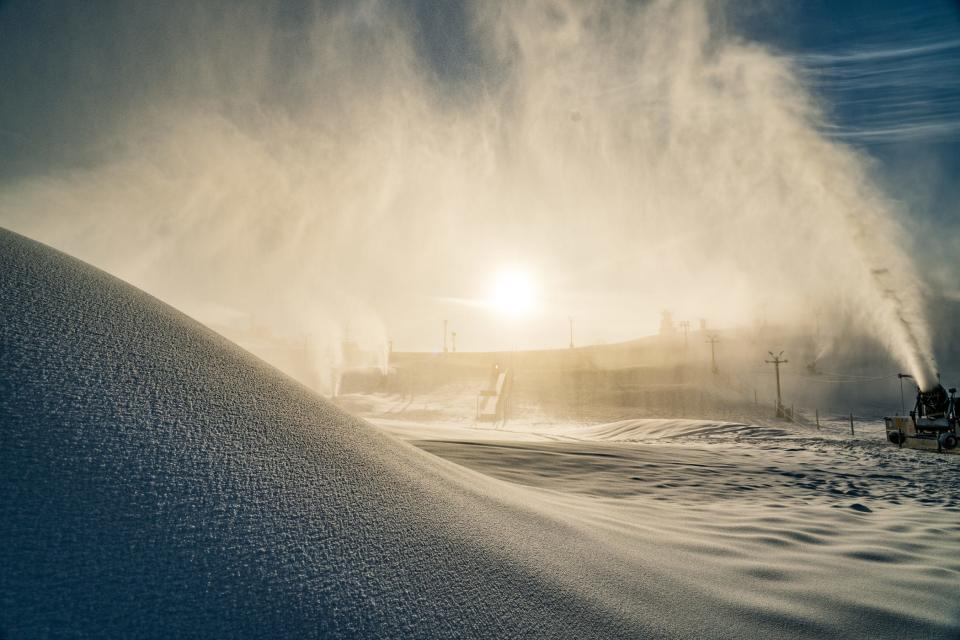Mount Brighton powers through mild winter with 67 snow machines
BRIGHTON — As the ski season comes to an end, it's worth examining the tool that helped many ski resorts survive this warmer, drier-than-usual winter: snow machines.
While some resorts rely on traditional sky-made snow with machines to supplement their slopes, others — like Mount Brighton — have operated for decades using the opposite strategy — a superior investment this year.
Mount Brighton has relied on snowmaking technology since its start almost 63 years ago, says general manager Mike Giorgio.
“Snowmaking is imperative to our operation," Giorgio said. "We have always relied on snowmaking to get our seasons going and expand our terrain. Obviously, help from Mother Nature goes a long way, but we’re pretty locked in on the idea that snowmaking is a necessity in Michigan.”

In normal years, slopes in southern Michigan might get a couple dozen inches of snow a year — still not enough to build an appropriate snowpack, Giorgio says — but after warmer temperatures this season, that number has fallen significantly short, leaving several ski resorts closed earlier than usual.
“Historically, we try to make it as far into March as possible — this year is obviously quite different with multiple days of rain and 60-plus degrees in the forecast for the next 10 days," Giorgio said. "We feel pretty confident that we’ll make it into March and a couple days beyond. ... It’s definitely more difficult this season, but if we didn’t have the snowmaking capabilities we do, we would’ve never opened.”
Other resorts in northern, cooler parts of Michigan, like Crystal Mountain near Traverse City, are confident they'll stay open through March into early April — all thanks to snow machines they had at the ready.

What is a snow machine?
When snowfall occurs the organic way, water particles freeze onto dust or pollen particles to form an ice crystal — a process called "nucleation" — and as the icy speck falls to the ground, more water molecules freeze onto the crystal and form the feathered arms to create what we call a snowflake.
Snow machines have the tough task of replicating that process fast.
"We use compressed air and a nucleator to create a seed-like ice crystal for the water to attach to and create our version of a snowflake," said Brooke Alba, vice president of sales and marketing at SnowMakers Inc. Headquartered in Midland, SnowMakers provides snowmaking equipment to snow-dependent businesses all over the world, even selling to the Winter Olympics.
Once water droplets fall, hit, and freeze to the ice crystals, a fan blasts the snow into the air, creating the tall plume of white you might find drifting over ski slopes in southern Michigan.
When the snow floats down from the air, it accumulates into piles until a snow groomer evenly distributes it.
Unfortunately, manufactured snow doesn't fall long enough to develop all the pretty intricacies of a natural snowflake — but there's no doubt it's snow.
There are two main conditions needed to create and maintain man-made snow, according to Alba: "wet-bulb temperature" and wind.
Wet-bulb temperature measures the relationship between temperature and humidity. Snow can be created in below-freezing and high-humidity conditions or above-freezing and low-humidity conditions; snowmakers must find a balance between the two.
Wind, on the other hand, can help or hinder snowmaking. While necessary to distribute the snow evenly across the slopes, wind blowing in the wrong direction can leave a large amount of snow in inaccessible areas. Better wind allows for more hang-time: time to develop and freeze before landing on the ground.

How many snow machines are needed to cover a resort in snow?
Alba says SnowMakers' best and biggest fans can cover a football field with 4 inches of snow in 12 hours.
Mount Brighton, meanwhile, has 67 snow machines — 23 of which are portable — to cover their 120-acre property. The machines pump out up to 3,200 gallons of water per minute, Giorgio said.
“The colder it is, the more we can pump and the more snow we can make,” he said. “If we have a solid 48 hours of snowmaking, we can go from totally green to 100% open, assuming the temperatures and all the variables are in place.”
This article originally appeared on Detroit Free Press: Mount Brighton powers through mild winter with 67 snow machines
